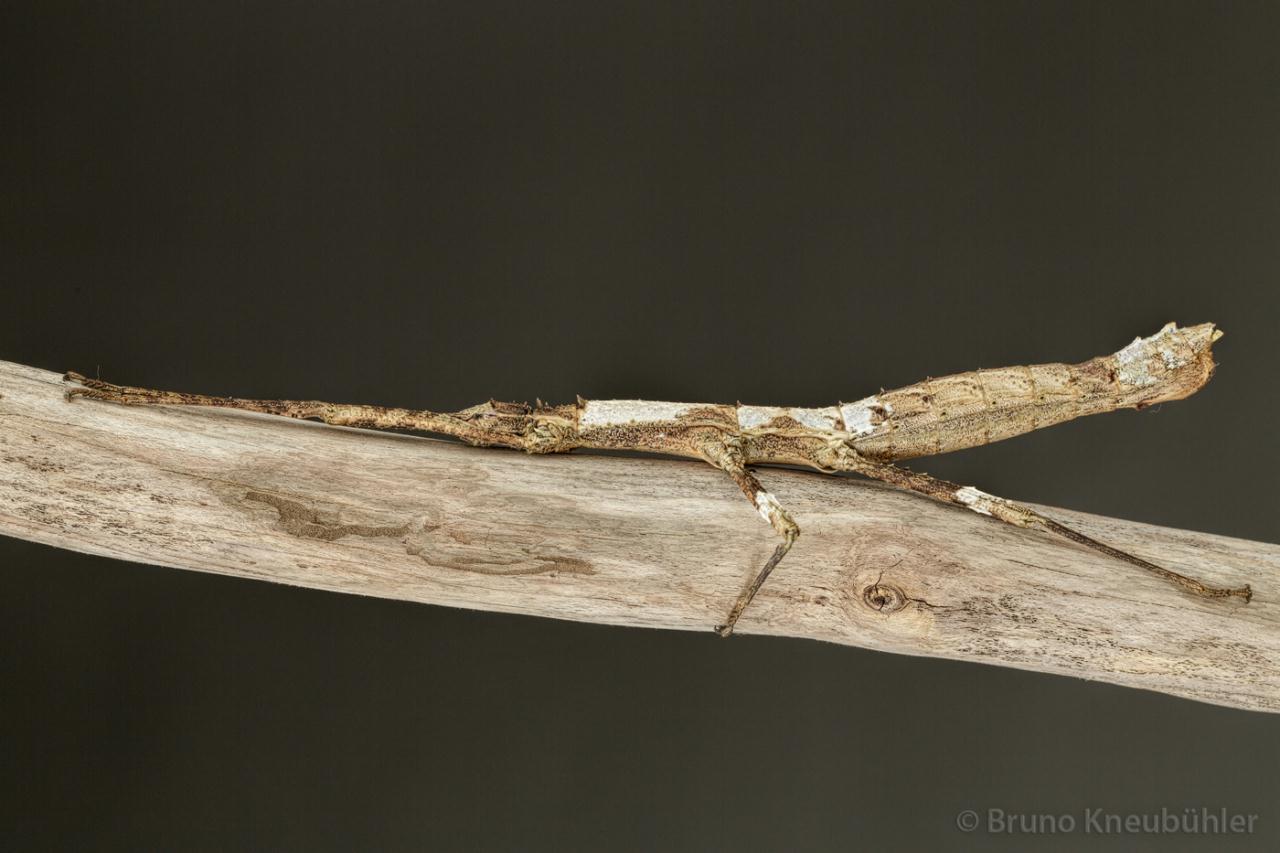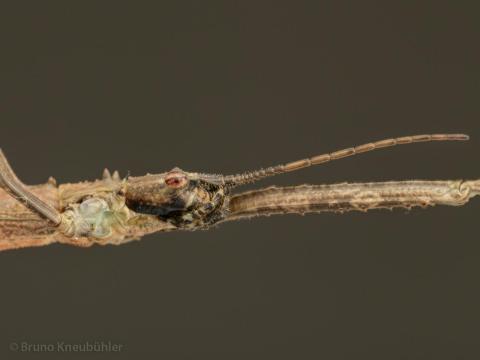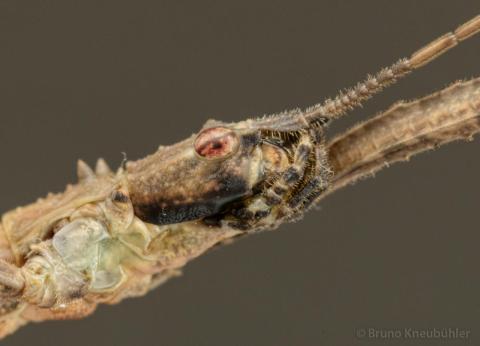
Genus
Species
Stock
CLP
630
Culture status
In culture
Foodplants
Bramble (Rubus spp.)
Breeding notes
(by Bruno Kneubuehler)
General Notes
- Paul D. Brock (England) is working on taxonomical aspects of this species
- Etymology
- morph- or morpho- from the Greek morphe (form, shape, kind, sort)
- di- from the Greek dis (double, twice)
- for further taxonomical informations → Phasmida Species Files
- other Dimorphodes species which are or have been in culture → PSG-Liste, Online-Culture-List
──────────────
Culture History
2014 - first successful culture by Bruno Kneubuehler
2014 – distributed to other breeders as Dimorphodes sp. „Galela“
──────────────
Origin
- Galela (Halmahera, Moluccas, Indonesia)
──────────────
Females
- bulky and big phasmids
- body length about 10 – 11 cm
- coloration is consistent amonst females
- captive-bred females and the wild-caught female are very similary colored
- mainly brown mottled
- light colored, almost white areas dorsally on thorax, legs and abdomen
- few spines, especially dorsally on head an prothorax
- antennae shorter than forelegs
- subgenital plate about as long as the posterior border of the 10th abdominal segment (anal segment)
- praeopercular organ (the structure at the ventral end of the 7th abdominal segment, which serves as an anchorage for the male during mating) is well developed
──────────────
Males
- rather slender, winged phasmids
- body length about 6.5 cm
- coloration is consistent amongst males
- mainly dark brown mottled
- reddish-brown eyes
- lower part of the sides of the head and mouthparts black
- small, black forewings
- no hindwings
- antennae shorter than forelegs
──────────────
Nymphs
- freshly hatched nymphs about 22 mm long
- green
- brown eyes
- by L4 it is possible to draw a distinction between ♀♂ (by the naked eye)
- examples on how to differentiate between male and female nymphs
──────────────
Eggs
- about 4 x 3 mm
- contrasty light-dark-brown mottled
- oval
- surface smooth and matt
- distinct capitulum present on the operculum (lid)
- micropylar plate heart-shaped
──────────────
Food Plants
- it is very much recommended to cut away the edges of the leaves for nymphs in L1
- regularly change the plants and the water in which they stand
- bramble (Rubus spp.)
is very well accepted by nymphs and adults
──────────────
Behaviour
- nymphs as well as adult are passive during the day and out and about feeding at night
- nymphs and adults often try to escape by dropping to the ground or crawling away when they feel threatened (like when they are touched). Usually they freeze again after just a few steps
- older nymphs and adults (espcially adult males)
- older nymphs and adults (especially adult males) often hide out during the day near or on the cage's floor
- matings occur often during the night, and males may stay with the same female for some days
- a defensive spray has not been observed (though they might actually have one)
- eggs are just dropped to the ground
──────────────
Developement
- incubation time (HH-incubation on slightly damp sand at 20 - 23 °C) is about 4 months
- please note, that for phasmids it is not uncommon that some nymphs hatch a few or many months after the first nymphs hatched
- spread some moss over the eggs - this will make it much easier for the nymphs to hatch unscathed and it also reduces mould growth to some extend
- males will be adult after about 4 months (at 20 – 23°C), females after 4 – 5 months
- females start laying eggs after about 3 – 4 weeks
- about 10 – 15 eggs per female and week
- adults can live for several months
──────────────
Breeding Notes
- my general notes on how to breed phasmids are an integral part of this care sheet …
- it is recommend to keep this species in a seperate cage. The culture is much more likely to be successful than in an multi-species cage which are all too often badly crowed
- degree of difficulty = 1 (1= very easy / 5 = very difficult)
- keep nymphs seperate from the adults. This makes it much easier to monitor their developement and they are protected from being disturbed or even harmed by the much bigger adults (like during their moults)
- keep the nymphs in a cage with good ventilation, but take care that the humidity does not drop too low
- a constantly wet paper towel on the floor of the cage helps raising humidity
- a humidity level of about 60+ % rH (for adults) and 75+ % rH (for nymphs) seems to be fine
- nymphs can be kept in a Faunabox (or similar cages like Faunarium)
- move nymphs to a bigger cage as they grow bigger
- a cage of at least 30 x 30 x 30 cm height should be provided for 3 – 4 adult couples
- at least 2 (-3) cages are needed to breed this species – one cage for the small nymph, maybe another one for the older nymphs and one cage for the adults
- spray smaller nymphs (L1 – L3) with water 3 – 4 times a week (do not used chlorinated tap water). This water should dry up within a few hours, therefore an airy cage is needed
- water can be sprayed directly at the nymphs
- it is not needed to spray older nymphs and adults
- make sure that nymphs, which are about to undergo their adult moult, do not find places in the cage which would not offer them enough space beneath to moult successfully

















































